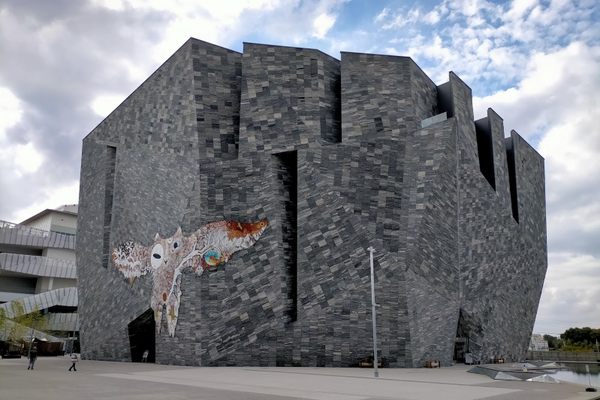National Museum of Qatar
The building is a gigantic piece of art inspired by the shape of a desert rose.
The interlocking discs of this museum’s exterior give the feeling that they are randomly placed at odd angles. But in reality, the design was inspired by the desert rose, a crystallized mineral formation found in salt basins. Yet for those who are unfamiliar with desert roses, the building would not be misplaced in a sci-fi movie where several space saucers smashed into one another. Either way, the institution cannot fail to impress.
Completed and opened in 2019, the National Museum of Qatar re-tells the story of how Qatar evolved through time, from a geological and biological perspective and from the standpoint of human history. Over an area of 170,000 square feet, the combination of traditional displays of items and multimedia makes a memorable experience.
Renowned architect Jean Nouvel is the mastermind behind this striking building. Apart from having architectural aesthetic value, the disks have other functions, such as protecting visitors against the scorching heat of the summer. By protruding from the main body of the building, they work as veritable awnings and create oddly shaped apertures that offer views of the surrounding area.
Another function of the disks is that even if they look randomly placed, they are actually part of an architectural strategy to support and reinforce the structure by transferring the strain of its weight evenly to the foundations.
Taken as a whole, the building draws an elliptical circuit around the historical palace of Sheikh Abdullah bin Jassim Al Thani, the Emir of Qatar during the first part of the 20th century.
The interior design of the museum mirrors its striking exterior appearance, taking visitors along pathways and exhibition rooms created by the interlocking disks. The walls are, therefore, sloping in different directions and at different angles, with the floor slightly rising and falling as if to follow the internal structure of a desert rose. Masterful interior design made the most of this unconventional space.
In addition to the exhibition rooms, in the building are also a 220-seat auditorium, a research center, laboratories, restaurants, cafes, and other shops. Around the museum is a garden with fountains, and it is connected to the nearby corniche via two pedestrian bridges.
Know Before You Go
The National Museum of Qatar is located on the South side of the corniche. It's impossible to miss and is open daily.

























Follow us on Twitter to get the latest on the world's hidden wonders.
Like us on Facebook to get the latest on the world's hidden wonders.
Follow us on Twitter Like us on Facebook